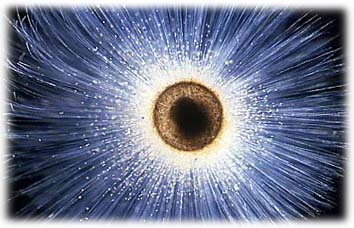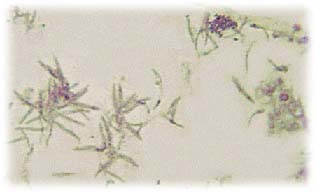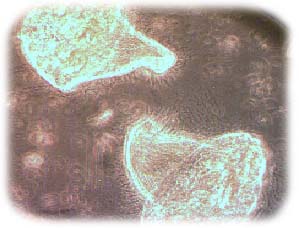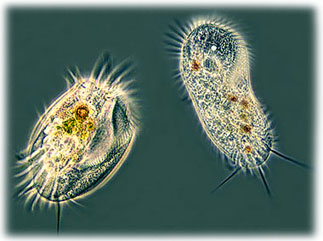
Members of the phylum Rhizopoda, the amoebas and their relatives, are all unicellular. Some of them have shells. No stages in their life histories are flagellated. Instead, amoebas use cellular extension called pseudopodia to move and to feed. You have probably observed this mode of motility in Amoeba proteus in the laboratory. Pseudopodia may bulge from virtually anywhere on the cell surface. When an amoeba moves, it extends a pseudopodium and anchors its tip, and then more cytoplasm streams into the pseudopodium (rhizopoda means "rootlike feet"). The cytoskeleton, consisting of microtubules and microfilaments, functions in amoeboid movement. Pseudopodial activity may appear chaotic but in fact amoebas show taxis as they creep slowly toward a food surface.




